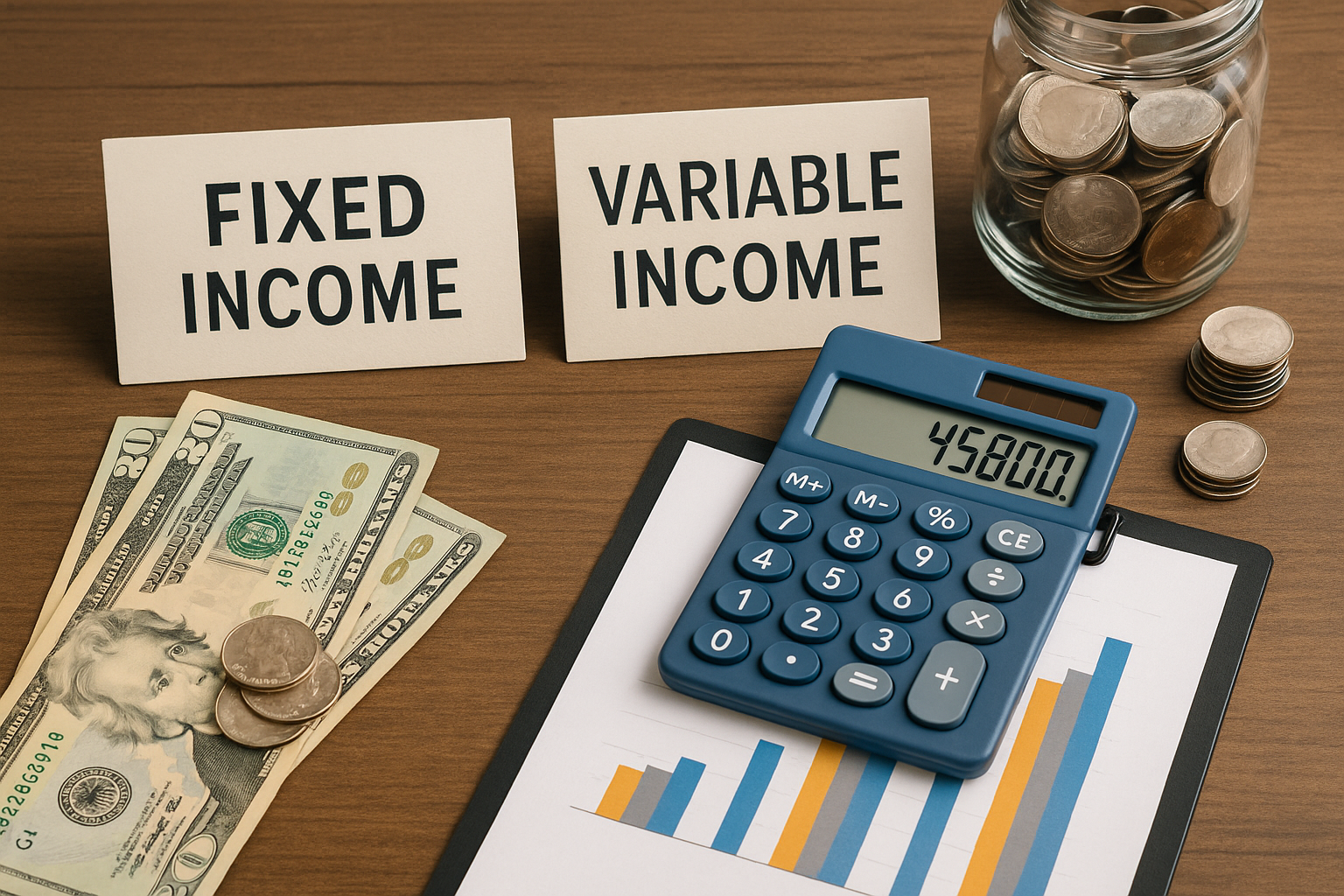When you start learning about investing, one of the first concepts you’ll encounter is the difference between fixed income and variable income investments. Understanding these categories is essential to building a strategy that aligns with your goals, timeline, and risk tolerance.
In this article, we’ll break down what each type means, their pros and cons, and when it’s best to use one over the other.
What Are Fixed Income Investments?
Fixed income investments are financial instruments that provide predictable returns over a set period. The investor lends money to a government, corporation, or financial institution, and in return, receives regular interest payments.
Common Types of Fixed Income Investments:
- Government Bonds (e.g., U.S. Treasury Bonds)
- Corporate Bonds
- Certificates of Deposit (CDs)
- Fixed Annuities
- Municipal Bonds
Key Features:
- Lower risk
- Fixed interest or coupon payments
- Maturity date (you receive your principal back)
- Less price fluctuation
Pros of Fixed Income:
- Stability and predictability
- Great for preserving capital
- Ideal for short- or medium-term goals
- Provides steady income
Cons of Fixed Income:
- Lower returns compared to stocks
- May not keep pace with inflation
- Interest rate sensitivity—prices drop when interest rates rise
Best for:
- Risk-averse investors
- Retirees needing regular income
- Saving for near-term goals (e.g., down payment, college tuition)
What Are Variable Income Investments?
Variable income investments are assets where the return is not guaranteed. Instead, earnings depend on market conditions, company performance, and economic factors.
Common Types of Variable Income Investments:
- Stocks (Equities)
- Real Estate Investment Trusts (REITs)
- Mutual Funds and ETFs with equity exposure
- Cryptocurrencies (high risk)
- Commodities
Key Features:
- Return depends on market fluctuations
- No fixed income payments (profits come from price growth or dividends)
- Greater potential for high returns
- Higher risk of loss
Pros of Variable Income:
- Higher growth potential
- Helps build wealth over time
- Can outpace inflation
- Ideal for long-term investors
Cons of Variable Income:
- Unpredictable returns
- Risk of losing capital
- Requires emotional discipline during market volatility
Best for:
- Long-term investors
- People building retirement savings
- Investors with higher risk tolerance
Side-by-Side Comparison Table
| Feature | Fixed Income | Variable Income |
|---|---|---|
| Return | Predictable | Unpredictable |
| Risk | Low to moderate | Moderate to high |
| Income | Regular interest payments | Dividends (if any) |
| Value fluctuations | Minimal | Frequent and unpredictable |
| Investment timeline | Short to medium term | Medium to long term |
| Examples | Bonds, CDs, savings | Stocks, REITs, mutual funds |
How to Choose Between Fixed and Variable Income
Ask yourself the following questions:
1. What is your risk tolerance?
- Low: Stick with fixed income
- Moderate: Mix both
- High: Add more variable income for potential growth
2. What is your investment timeline?
- Less than 3 years? Prefer fixed income for stability
- 5+ years? You can consider variable income options
3. Do you need regular income?
Fixed income investments like bonds are ideal for those needing consistent cash flow (e.g., retirees).
4. What are your financial goals?
- Saving for a car or wedding? Use fixed income.
- Planning for retirement or wealth building? Variable income provides better long-term growth.
Can You Combine Both?
Yes! In fact, diversifying your portfolio across fixed and variable income investments is one of the best strategies to balance risk and return.
Example of a Balanced Portfolio:
- 60% stocks (variable income)
- 30% bonds (fixed income)
- 10% cash or CDs (liquidity + safety)
This allows your money to grow while maintaining some stability and income protection.
Final Thoughts: Balance Is Key
There’s no one-size-fits-all investment. Fixed income offers security and consistency, while variable income delivers growth and opportunity. By understanding the differences, you can build a smarter, more resilient portfolio that supports both your current needs and future dreams.
Start small. Mix wisely. Review regularly. And remember—your best investment is in learning how money works.


Sem comentários